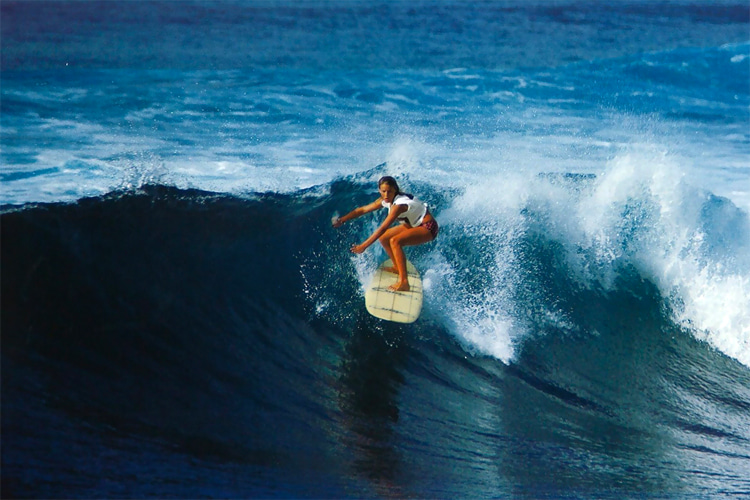Margo Oberg is one of the most talented and decorated professional female surfers of all time and a big wave-riding pioneer. She won four world titles (1968, 1977, 1980, and 1981).
Margo Godfrey was born on September 8, 1953, in Pennsylvania.
She is considered one of the pioneers of women's surfing and is recognized as one of the best and most influential female surfers ever.
The daughter of an aerospace engineer moved with her family to La Jolla, California, at age five.
At 10, after trying tennis, she started surfing.
"The first wave I ever rode, I took off and rode all the way to the sand, then paddled back out and rode another 50 waves that day, all the way to the sand. It was total enthusiasm!" Margo once revealed.
Immediately after, the little girl was the youngest competitor at the Western Regional Surfing Championships, making her victorious debut in a no-age limit division.
She also received the Most Promising Surfer award at the event.
One year later, Margo won the 12-year-old division of the Windansea Surf Club menehune contest, defeating an all-boy field.
Under the guidance of power surfer Mike Doyle, she was a finalist in the Makaha International and placed second in the United States Surfing Championships.
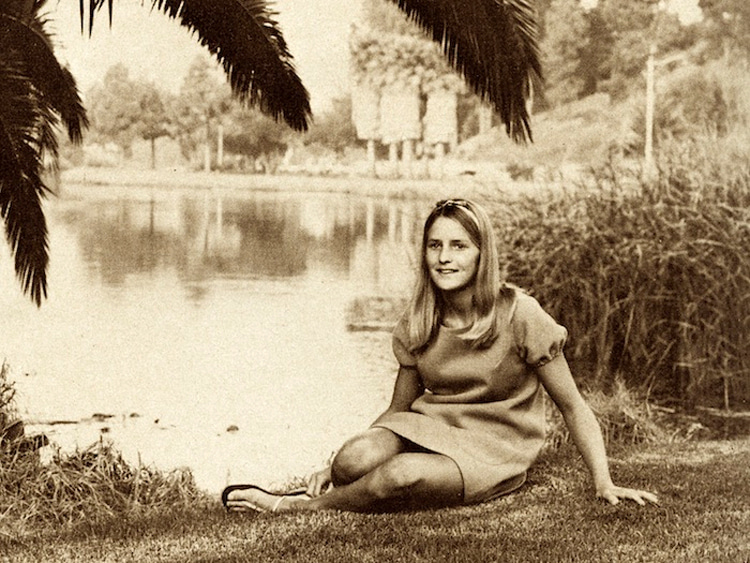
Warming Up
Having started her surfing journey on longboards, she transitioned to riding shortboards in 1968.
At that time, she was the top-seeded women's surfer in California.
During the late 1960s, Joyce Hoffman was the reigning queen of women's surfing, but Margo Godfrey started making her mark by outperforming Joyce Hoffman multiple times in 1968.
Godfrey won three out of seven events in that year's elite AAAA-rated California circuit and emerged victorious at both Makaha and the East Coast Surfing Championships.
In late 1968, the fiercely competitive ninth-grader from Santa Barbara High School won the World Surfing Championships in Puerto Rico. She was 15 and had won her first world title.
The following year, Godfrey dominated all four AAAA-rated events, becoming the first female surfer to receive a prize-money check of $500 for her win in the Santa Cruz Pro-Am.
However, her second-place finish in the 1970 World Championships took a toll on her.
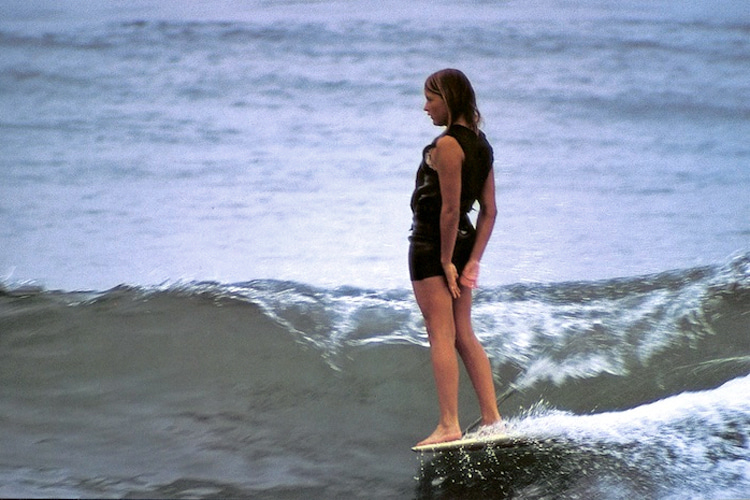
Retirement and Comeback
After experiencing a sort of breakdown, Godfrey withdrew from the surf scene entirely.
"I had to go back to high school and live through the 11th and 12th grades not being world champion," she later recalled.
"People kept asking, 'What happened? Why didn't you win?' It was all so devastating that I retired."
She later graduated from high school in 1972 and got married to Steve Oberg, an accountant and Church of the Living Word pastor from San Diego.
As a fervent born-again Christian, Margo Godfrey-Oberg moved with her husband to Kauai, and for three years, she was happy "learning to be a nobody."
The surfer champion also taught wave-riding and managed a beach concession stand.
Following a five-year hiatus, in the summer of 1975, friends convinced her to accept a special surf invitation.
And so Oberg made a remarkable comeback by winning the Hang Ten Women's International Pro Surfing Championships at Malibu.
Margo's surfing had improved during her seclusion, and she developed a function-first style of riding with arms spread evenly, crouched, and ready.
Although she was aggressive in her maneuvers, Oberg stayed within her abilities and rarely fell.
In 1975, Margo and six other female surfers competed in the men's Smirnoff Pro-AM contest, where she emerged as the top-ranked woman and placed third overall.
This historic victory earned her $1,000.
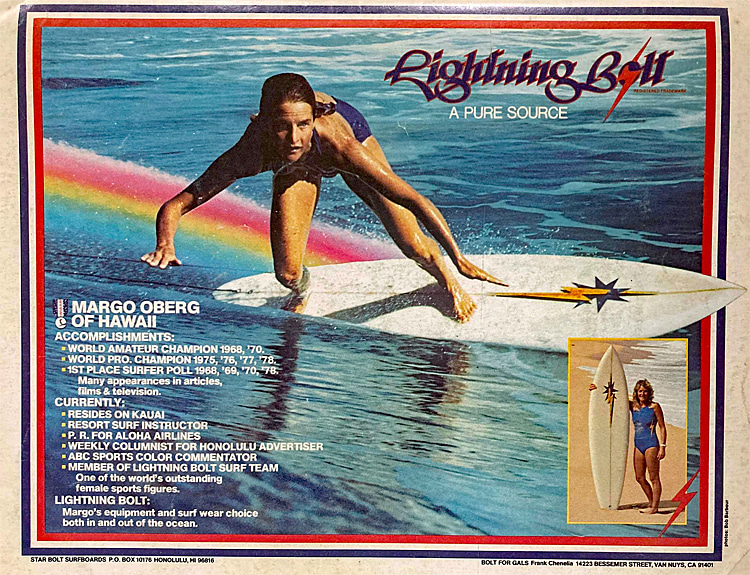
Love of Big Waves
Following her breakthrough success, she signed a contract with the surf brand Lightning Bolt and continued her professional surfing career.
In the mid-1970s, Oberg found her niche in riding larger surf and became a regular fixture during the winter season at Sunset Beach on the North Shore of Oahu, where she thrived in waves as big as 15 feet.
With her renewed sense of self-confidence, at times bordering on arrogance, she dubbed herself "the women's Gerry Lopez" and openly declared that she was her own favorite surfer.
"There are ten famous men in surfing and one really famous woman. That's me. I want to ride the biggest waves any woman has ever ridden," Margo told Sports Illustrated in 1976.
When a women's division was introduced to the world pro tour in 1977, Oberg set the standard for female surfing by winning the championship that year and finishing runner-up position by a narrow margin to fellow Hawaiian Lynne Boyer in 1978.
After taking a second career break in 1979, she made a triumphant return and won her third world title by winning both events on the abbreviated 1980 world tour.
"In the late 1970s, any excitement generated by the women's pro tour focused on the great rivalry that developed between Margo Oberg and Lynn Boyer, a sweet-smiling, wickedly competitive Honolulu teenager," explains Matt Warshaw in "The History of Surfing."
"Boyer was the most dynamic female surfer of the age. She rode in a low spring-loaded crouch and did turns like Larry Bertlemann."
"Oberg had the range and polish and strategic know-how, but she had an upright old-guard stance; in general, she played the percentages."
"Boyer took more chances, wiped out more often, but was quick, modern, and flashy."
"She was also image-conscious and presented herself as a lightly sexed-up beachfront ingénue, with her brightly airbrushed surfboards setting off her curly red-blond hair and her own Lynn Boyer' shooting star' logo."
"Pretty much the entire sport had a crush on her," concludes Warshaw.
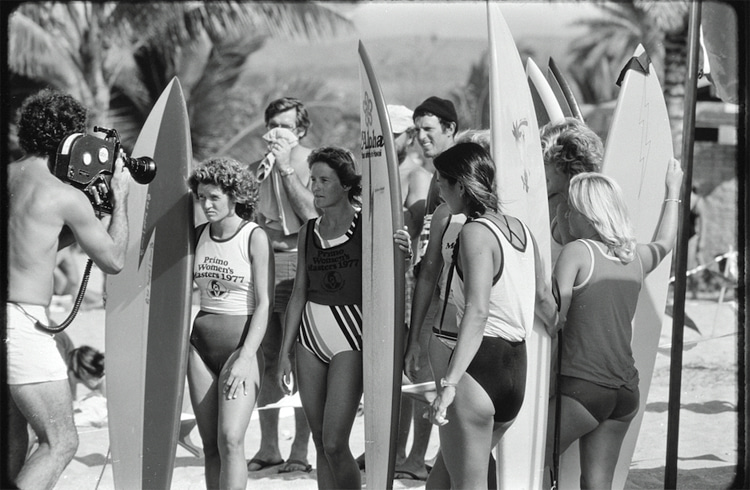
An Epic Finish
The truth is that Oberg continued her dominance by winning three out of four events in 1981 to secure her fourth and final championship.
"Margo was the first girl to actually carve turns and link them together. She had a stand-up-straight style and dropped low in her stance when she was about to execute a turn or cutback," notes Andrea Gabbard, author of "Girl in the Curl: A Century of Women in Surfing."
"She rode like a guy and was the first in my mind to be better than most of the guys. She was also brave, whether it was 12 feet Sunset or trying a macrobiotic diet. She would give it a go and see what happened."
In 1981, the 28-year-old made the cover of Surfer, the first time a woman was featured on it since 1964.
"Twenty-five IPS women's tour events were held between 1977 and 1981. Oberg and Boyer won 20 of them. For five years, no other female pro surfer was even in the game," adds Matt Warshaw.
In 1980 and 1981, Margo Godfrey-Oberg won five of the six scheduled events, making it the most dominant run in women's pro surfing tour history.
After retiring from full-time competition at the age of 29, Oberg still participated in events in Hawaii and placed second in the 1982 World Cup, just three months after giving birth to her first child.
In 1983, she won her final pro tour victory at the World Cup of Surfing held at Sunset.
For Godfrey-Oberg, riding a big wave at Sunset Beach was "like bargaining with God. I've been on waves that are 30 feet high, and it's like angels are holding my arms up. It's a miracle."
During the late 1970s, her contributions to the surfing world extended beyond the waves.
She wrote a weekly surfing column for the Honolulu Advertiser and a semi-regular column on the women's pro tour for Surfing magazine.
Additionally, Oberg provided color commentary for surfing events on ABC's "Wide World of Sports."
An Influential Surfing Legend
Her achievements were widely recognized, and she won the Surfer Magazine Poll Awards in 1968, 1969, 1978, 1980, and 1981.
She was the only woman named in a 1985 Surfer article titled "25 Surfers Whose Surfing Changed the Sport."
Oberg's contributions to the surfing world were recognized through various honors and accolades.
She was inducted into the International Surfing Hall of Fame in 1991, the Huntington Beach Surfing Walk of Fame in 1995, and the Hawaii Sports Hall of Fame in 2001.
Oberg was profiled in the 2001 cable TV documentary series "20th Century Surfers."
Her talents were showcased in nearly a dozen surf movies and videos, including "Waves of Change" (1970), "Five Summer Stories" (1972), "Adventures in Paradise" (1982), "Shock Waves" (1987), and "Surfers: The Movie" (1990).
In 2000, Sports Illustrated for Women recognized Oberg's achievements by including her among the top 100 female athletes of the 20th century.
The California-raised athlete has owned and operated the Margo Oberg Surfing School in Kauai since 1977, continuing to pass on her knowledge and love for surfing to new generations.
She also wrote a book about competitive strategies for women.
Margo Oberg is a fan of yoga and healthy food and has two sons - Shane Kainoa and Jason Kaipo.
"I started surfing because I really like to be alone, and most of my time is still spent alone, surfing, reading, whatever," she once said.
"I enjoy all the publicity, but sometimes I need to remember my priorities. In fact, sometimes I'd like to be just totally anonymous."
